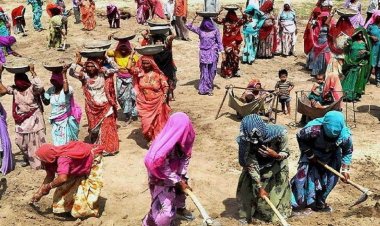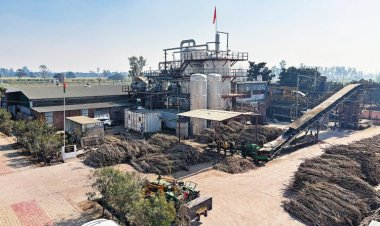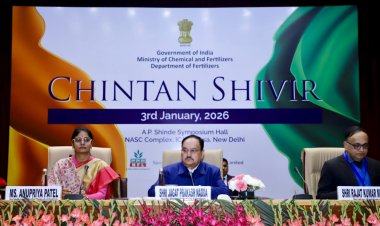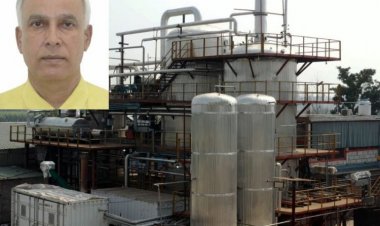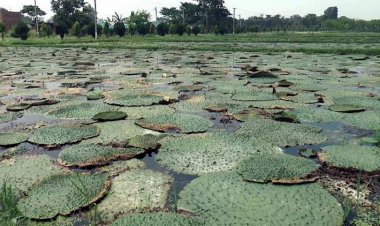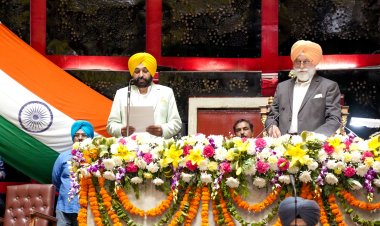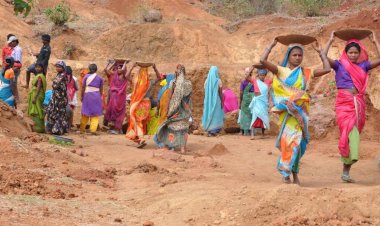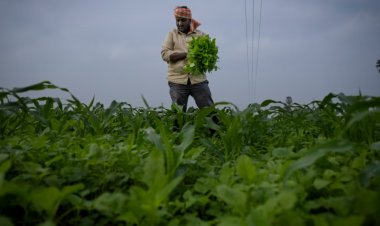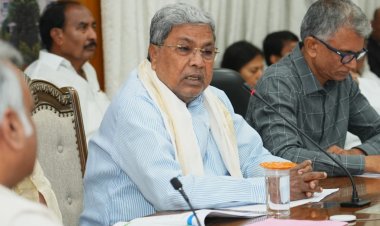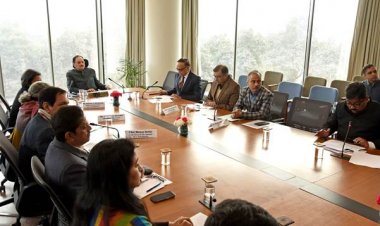Svamitva Scheme: Benefits and challenges
The real empowerment would be for landless persons, whose properties are their buildings/houses and who cannot use them for getting any loans or financial assistance. For them, their property would act as collateral now.
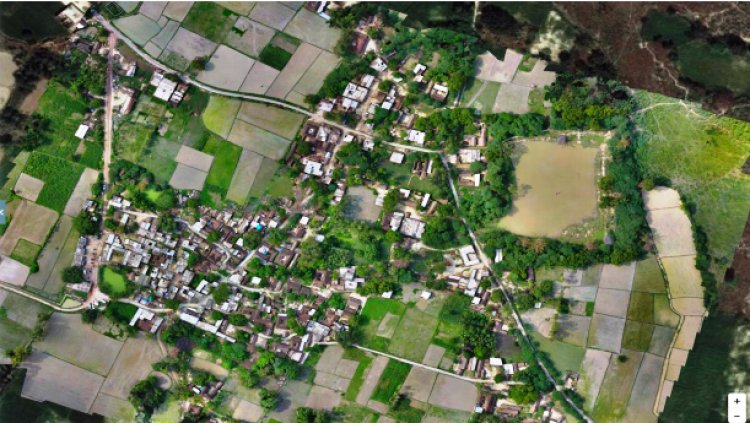
The Svamitva (Survey of Villages Abadi and Mapping with Improvised Technology in Village Areas) Scheme, which was implemented in a pilot project mode in six states, namely Haryana, Karnataka, Madhya Pradesh, Maharashtra, Uttar Pradesh and Uttarakhand, has been extended to all States and Union Territories (UTs) in Budget 2021-22 by the Finance Minister of India. Prime Minister Narendra Modi had announced the Svamitva (meaning ownership) Scheme on April 24, 2020, while interacting with the presidents of Gram Panchayats (GPs) on television on the occasion of the National Panchayat Day. The Scheme would be helpful to villagers in the earmarking of their properties and the preparation of village plans.
The Svamitva Scheme (SS) aims at (i) providing documentary proof of residential properties for those who are residing in villages; (ii) ensuring clarity on the property rights of people; (iii) facilitating the preparation of planning and revenue collection; (iv) helping resolve property-related disputes; (v) helping in the preparation of better-quality Gram Panchayat Development Plans (GPDPs), leveraging the maps created under this programme; (vi) providing an integrated property validation solution for rural India, engaging the latest Drone Surveying technology, for demarcating the inhabitant (Aabadi) land in rural areas; and (vii) mapping of rural housing land using the latest survey methods and drones. SS is an experiment attempted to be carried out in convergence mode with the efforts of the Ministry of Panchayati Raj, State Panchayati Raj Departments, State Revenue Departments and the Survey of India.
In fact, SS is the outcome of the experience of mapping land and buildings of Sirsi village of Karnal district in Haryana, which was started in March 2019. The details were captured with the help of technology like drones from inhabited and cultivable land and the veracity of the collected data was then discussed in the meeting of the GP, which the ward members attended, and in the Gram Sabha, in which voters participated with the requisite quorum.
Decentralized planning, which is also known as micro-planning or local planning, has not been operationalized in the length and breadth of the countryside. Often, even elections to the panchayats were not held in the states. Whenever there were changes in the leadership of the states, elections to Panchayats were held by the new government in the name of power to the people. But nothing worthwhile has happened in regard to decentralization and putting it into practice by operationalizing plans at grassroots levels. The 73rd Amendment to the Constitution has brought a revolution in decentralization, particularly in political decentralization, by enabling more than three million elected representatives, including those elected from women, SC and ST categories, across the country. Panchayats and municipalities, which are constituted as per the 74th Amendment Act, are expected to prepare plans for economic development and social justice, including 29 subjects listed in the 11th Schedule and 18 subjects listed in the 12th Schedule of the Constitution. Further, Article 243ZD of the Constitution says that after integrating plans prepared by the Panchayats and Municipalities a District Development Plan will be prepared, which, among others, will also prepare a spatial plan of the district as a whole. But the million-dollar question is how a spatial plan will be made without attempting and making spatial plans at village and Nagar Panchayat levels. The SS would be a step towards fulfilling the objective of the Constitution Amendment act. Spatial planning cannot be made without making a spatial database of assets, inventories, land records, etc. The spatial data so generated would be very helpful to villagers in many ways.
In fact, the scheme would be useful to villagers in numerous ways. Some of the major benefits may be listed as follows:
- So far, the inhabitants are not able to use their property as collateral to get loans from banks and other financial institutions. Only those who have agricultural land are able to take loans from banks etc. These sections of village or farmers would be having an additional source of getting money from the banks. Hence, they will be empowered additionally. But the real empowerment would be for landless persons, whose properties are their buildings/houses and who cannot use them for getting any loans or financial assistance. For them, their property would act as collateral now.
- So far, if there is any dispute of property, there is no way to resolve it properly due to the absence of any record. The local people have to come into the picture and their decisions are influenced by caste, creed and money considerations. Besides, in some of the states like Haryana, verification of land is done by the Lamberdars (traditional revenue persons) and the president of GPs. Now, there will be a foolproof record in the possession of the owner of the properties and the use of such persons as mentioned above will not be required.
- Panchayats would be able to get financial benefits on account of the transfer of property through sale. The amount so received by the GP would be used for the creation and maintenance of community assets and also the creation of requisite infrastructure useful for village communities and society.
- With such an exercise, the value of the property would appreciate. Such appreciated value of the property would give a new direction of development to rural areas. There would be chances of the location of industries in these areas and the property value of those areas which are located on roads will appreciate further.
- The Scheme would also be instrumental in building peace and harmony in the village society as social strife on account of land and property disputes would be eliminated.
However, there are challenges in the implementation of the Scheme in fields where farmers go to any extent to save the land they have encroached on. There are more challenges in the location of agricultural land illegally possessed by a person or family. If the land or pond which is located in the vicinity of habitats, has been encroached on by villagers and they have constructed houses upon it, how would such land be freed by the administration? In fact, due to the laxity of action on the part of the Panchayats, villagers have encroached on such important common lands and water sources. The local politics on the part of presidents of GP and other influential persons would also be a challenge in the implementation of the scheme.
Another important aspect of the scheme appears to be that it would lead to further indebtedness among farmers. The Kisan Credit Cards (KCCs) have not been used by the farmers as these should be in case of as many as 90 per cent, as I have gathered from interaction with progressive farmers from western UP and Uttarakhand. Further, a rent-seeker group has also emerged among the farmers. This group takes loans from banks under KCCs at a very subsidized rate and then gives loans to the needy on exorbitant rates as high as 60 per cent. SS would give them an additional source to take loans from banks and other financial institutions and exploit the ones already exploited at village levels.
There may also be a political fall-out of the scheme. Those who have encroached on personal lands and other community lands might go against the government in power. These are mostly powerful persons who have influence in the village society and economy. Hence, there should be a sunset provision in the guidelines mentioning a deadline after which action will be taken against encroachers of common land resources.
( Dr. Mahi Pal, Indian Economic Service (Retd) is President, Karpa Foundation. The views here are personal.)



 Join the RuralVoice whatsapp group
Join the RuralVoice whatsapp group


















